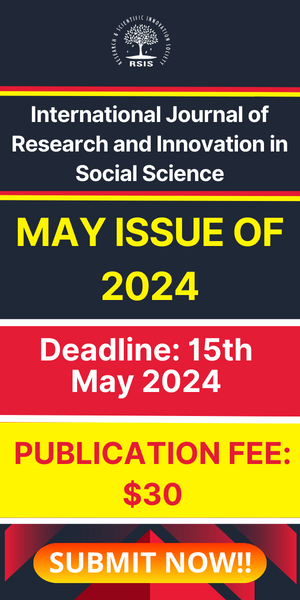Analysis of Permanent Magnet Hybrid Excitation Machine
- April 20, 2019
- Posted by: RSIS
- Category: Industrial & Systems Engineering
International Journal of Research and Scientific Innovation (IJRSI) | Volume VI, Issue IV, April 2019 | ISSN 2321–2705
Analysis of Permanent Magnet Hybrid Excitation Machine
Nil Patel1, Deepak Porwal2
1Power Electronics and Drives, Research and Development, Gujarat, India
2Electrical Engineering Department, MNIT, Jaipur, India
Abstract—It is a general perception that the interior permanent magnet machines will have different values of inductances along d-axis and q-axis and hence they are salient pole machines. Though it is true in most of the cases, some interior permanent magnet machines may turn out to be non-salient pole machines. Hence an accurate modeling of magnetic equivalent circuit is very much required in order to estimate the inductance values along d-axis and q-axis. A hybrid excitation machine with an interior configuration of permanent magnets and field winding is proposed in the literature. Though it appears to be a salient pole machine from rotor configuration view point, the actual analytical inductance analysis on this machine proves that it is a non-salient pole machine. A simpler analytical approach is carried out through approximate linear magnetic equivalent circuit. The analytical analysis is validated with analysis carried out through FEM software.
Keywords—Flux regulation, Hybrid excitation, Permanent magnet machine, Air gap inductance.
I. INTRODUCTION
The salience ratio which is the ratio between q-axis inductance and d-axis inductance of a permanent magnet machine plays a key role in its operation. Substantial research has been carried to improve the saliency of the permanent magnet machine for its own advantages. The utilization of saliency effect for sensorless control technique of permanent magnet machine is well described [1-4]. The saliency effect of a machine may arise due to structure configuration or saturation effects. Simulation of permanent magnet machines has been carried out taking structural and saturation saliencies into account [5-6].
Different rotor configurations are proposed in the literature to improve the saliency of permanent magnet machine. A multilayer permanent magnet machine is analyzed with multilayer magnet structure in the rotor for achieving large saliency [7]. Rotor with internal flux barriers designed for a permanent magnet machine shows considerable increase in the saliency ratio [8]. The torque characteristic of interior permanent magnet machine is improved by increasing the saliency ratio and thereby reluctance torque through ribs and air barriers in the rotor[9].


